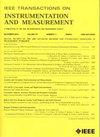处理绝缘子缺陷数据的域移位:一个破碎和自爆绝缘子缺陷跨域检测的通用框架
IF 5.6
2区 工程技术
Q1 ENGINEERING, ELECTRICAL & ELECTRONIC
IEEE Transactions on Instrumentation and Measurement
Pub Date : 2025-06-18
DOI:10.1109/TIM.2025.3580815
引用次数: 0
摘要
准确、及时地检测绝缘子缺陷对电力系统的安全稳定至关重要。然而,目前的检测面临着由于数据不足而引起的领域转移的挑战,这些数据不包括大多数检测场景。为了解决这一挑战,我们提出了一种包含领域泛化(DG)和领域自适应(DA)方法的绝缘子破碎和自爆缺陷检测的鲁棒泛化框架。首先,我们使用域随机化(DR)技术在三维空间中合成高保真绝缘体缺陷数据,以创建称为DR- syn的多种变体。对于DG方法,我们在训练过程中使用基于我们提出的实例重加权图像质量评估(IR-IQA)模型和提出的差异约束不变学习(DCIL)模型的域扩展方法提取跨域数据的不变特征。对于数据分析方法,我们提出了一种包含目标域背景信息的数字孪生辅助DR-Syn模型,用于特定域数据的生成。大量的实验验证了我们的框架在减轻域漂移方面的有效性。基本的DR-Syn数据可以比真实的域内数据训练执行得更好。DG方法在$\textbf {mAP}_{50}$上优于真实数据训练模型,域内训练和跨域验证分别提高4.2%和5.3%,跨域验证分别提高13.9%和29.3%。采用数字孪生背景建模后,数据分析方法的性能分别提高了15.7%和17.9%。详细的消融研究证实了我们方法的有效性。本文章由计算机程序翻译,如有差异,请以英文原文为准。
Addressing Domain Shift in Insulator Defect Data: A Generalization Framework for Cross-Domain Detection of Broken and Self-Blast Insulator Defect
Accurate and timely detection of insulator defects is essential for the safety and stability of the power system. However, current detection faces challenges of domain shifts arising from insufficient data that do not encompass most inspection scenarios. To address this challenge, we propose a robust generalization framework for insulator broken and self-blast defect detection involving domain generalization (DG) and domain adaptation (DA) methods. First, we synthesize high-fidelity insulator defect data in 3-D space using domain randomization (DR) techniques to create diverse variations termed DR-Syn. For the DG method, we extract invariant features across domain data using a domain expansion method based on our proposed instance-reweighted image quality assessment (IR-IQA) model and a proposed discrepancy-constrained invariant learning (DCIL) model in the training process. For the DA method, we proposed a digital-twin-aided DR-Syn model that incorporates the target domain background information for specific-domain data generation. Extensive experiments validate the effectiveness of our framework in mitigating domain shift. The basic DR-Syn data can perform better than real-world intradomain data training. The DG method outperforms the real-world data training model in $\textbf {mAP}_{50}$ of 4.2% and 5.3% in intradomain training and 13.9% and 29.3% in cross-domain validation. The DA method achieves additional performance gains of 15.7% and 17.9% enhanced with digital-twin background modeling. Detailed ablation studies verify the validity of our method.
求助全文
通过发布文献求助,成功后即可免费获取论文全文。
去求助
来源期刊

IEEE Transactions on Instrumentation and Measurement
工程技术-工程:电子与电气
CiteScore
9.00
自引率
23.20%
发文量
1294
审稿时长
3.9 months
期刊介绍:
Papers are sought that address innovative solutions to the development and use of electrical and electronic instruments and equipment to measure, monitor and/or record physical phenomena for the purpose of advancing measurement science, methods, functionality and applications. The scope of these papers may encompass: (1) theory, methodology, and practice of measurement; (2) design, development and evaluation of instrumentation and measurement systems and components used in generating, acquiring, conditioning and processing signals; (3) analysis, representation, display, and preservation of the information obtained from a set of measurements; and (4) scientific and technical support to establishment and maintenance of technical standards in the field of Instrumentation and Measurement.
 求助内容:
求助内容: 应助结果提醒方式:
应助结果提醒方式:


